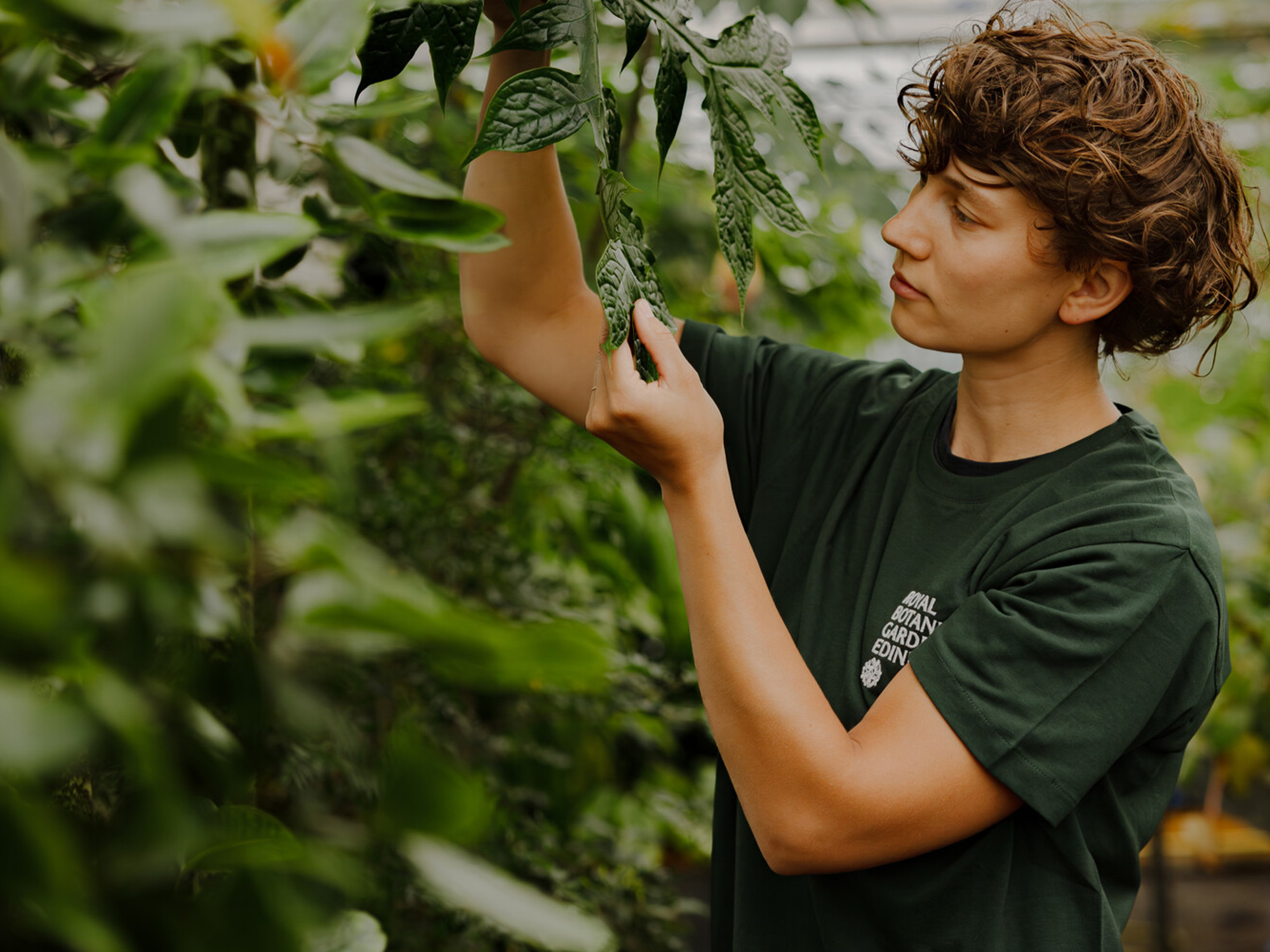
Who we are
Our mission is to explore, conserve, and explain the world of plants.
-
The Royal Botanic Garden Edinburgh (RBGE) is a leading botanic Garden and a global centre for biodiversity science, horticulture and education.
We explore, conserve and explain the world of plants and fungi, pushing the boundaries of our scientific knowledge to find and apply solutions to protect our botanic world. We engage nationally and internationally to deliver our vision: a positive future for plants, people, and the planet.
As a Non-Departmental Public Body (NDPB), RBGE is sponsored and supported through Grant-in-Aid by the Scottish Government’s Environment and Forestry Directorate (ENFOR). We are also a registered charity and hold legal status as an academic institution.
RBGE is governed by a Board of Trustees appointed by Scottish Ministers and led by the Regius Keeper, Simon Milne. Our work is supported by a dedicated Leadership Team and over 240 staff members across diverse disciplines.
The organisation is structured into five key areas:
-
Science
-
Horticulture & Visitor Experience
-
Learning & Engagement
-
Development & Communications
-
Resources & Planning
Together, we collaborate to advance our goals in plant research, conservation, education, and public engagement—locally, nationally, and globally.
-
Meet our people
Our Patron, His Majesty The King
Watch a specially recorded message to mark our 350th anniversary by His Majesty and Patron of the Royal Botanic Garden Edinburgh.
| Time | Description |
| Ladies and gentlemen, I am immensely proud to be patron of the Royal Botanic Garden Edinburgh, widely and affectionately known in Scotland as the Botanics. | |
| Behind the Botanics lies 350 years of passion, innovation, and endeavour. When in 1672 doctors Andrew Balfour and Robert Sibbald established a modest physic garden in the grounds of what is now the Palace of Holyroodhouse they could hardly have foreseen that they had sown the seeds of such an inspiring project. | |
| Scotland's national botanical collection now includes three more splendid gardens in our small but climatically diverse country. Faced with the now overwhelming threat of accelerating global warming, climate change, and the catastrophic loss of biodiversity, our understanding and conserving of plants is absolutely vital to the sustaining of nature's capital. The natural assets that provide social, economic, and environmental benefits for us all. | |
| Despite the dreadful destruction of so many of the world's biological resources, there is some hope. Through its plant research, its conservation and education programmes, and its outstanding horticulture, the garden plays a major role in turning hope into action. As preserving biodiversity and tackling climate change are inextricably linked they must be addressed across international boundaries, which is why I'm so glad to know of the garden's extensive network of partnerships across the continents. It's dedicated staff work with government, scientists, horticulturists, and educators in 35 countries addressing global and community needs from the Cairngorms and Himalayas to the forests of South America and Southeast Asia. | |
| To create a sustainable future we must invest in our young people to understand the natural world and to develop their sustainability skills. That is why it is hard to exaggerate the importance of botanic gardens, which not only provide a biodiverse and beautiful environment for the training of scientists and horticulturists but which also inspire non-specialists to value our natural assets and which give everyone in our increasingly urbanised society, the joy and wellbeing so freely offered by nature. There is both instruction and inspiration to be drawn from the sheer magnificence of the Scots pine and the baobab, and the miniature delights of alpine and desert blooms. | |
| The accomplishments of the Royal Botanic Garden Edinburgh represent the joint achievement of generations of skilled and committed staff, dedicated volunteers and generous members, funders, and donors. As patron and to mark the immense importance of the 350th anniversary, I can only express my heartfelt thanks to all those who have made the Botanics a world-leading institution and a place of hope. |
